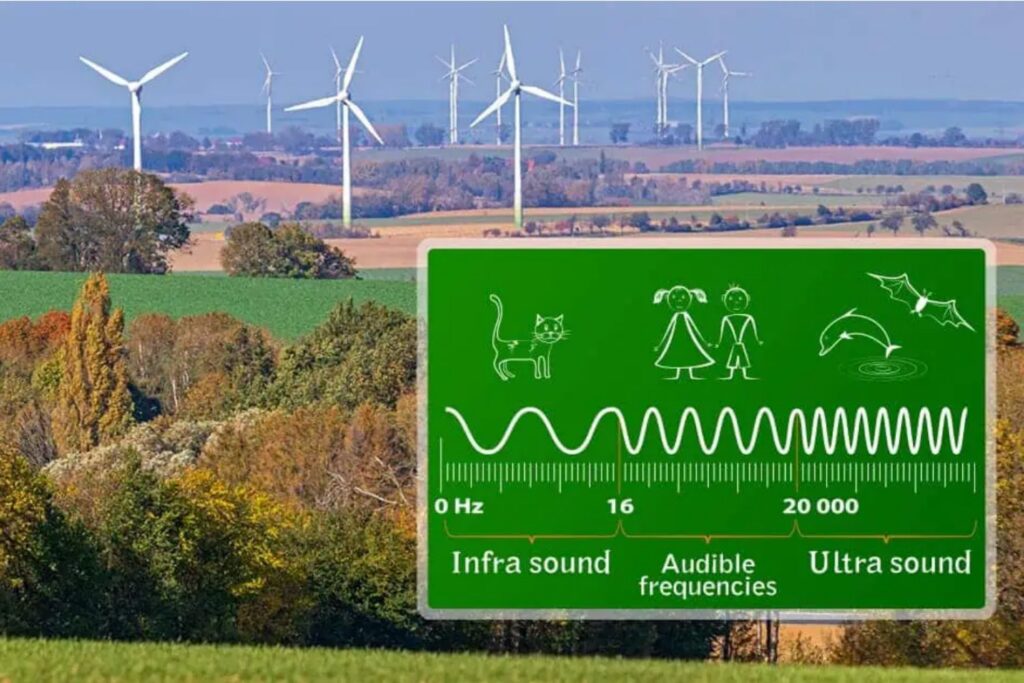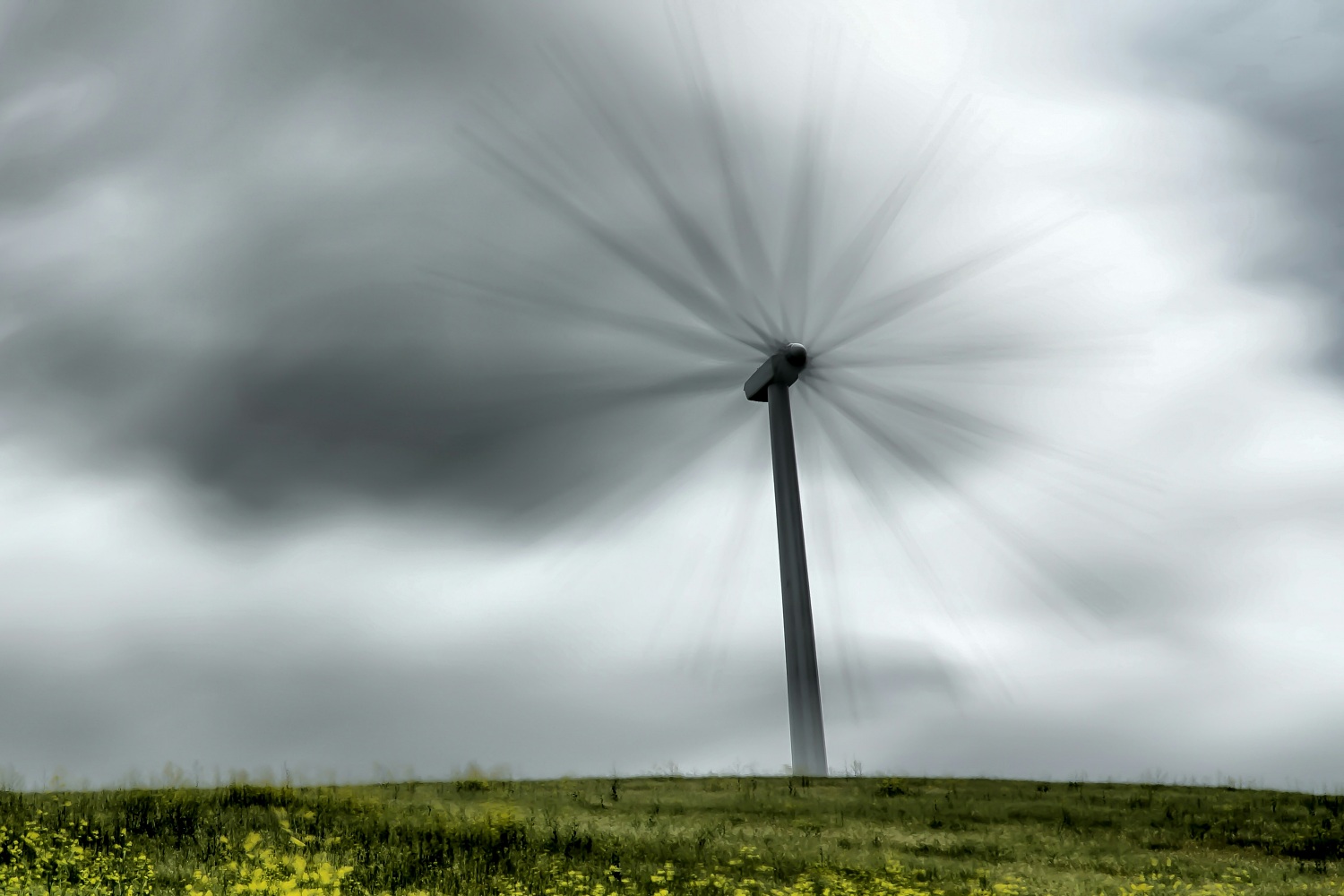By Maurice Forgeng for The Epoch Times, March 23, 2024
More than 70,000 wind turbines operate across the United States, and the U.S. government continues to approve offshore wind projects as part of its transition toward clean energy.
When wind turbines rotate, however, they generate not only electricity but also infrasound.
For Dr. Ursula Bellut-Staeck, this development represents “a huge problem for all forms of organisms,” including humans. The medical doctor and scientific author has been studying the health effects of infrasound for several years. She has been looking into infrasound as a stressor on the cellular level since 2015 and published a paper in 2023 on how infrasound affects microcirculation and endothelial cells.1
Inaudible but Impactful
Infrasound is defined as a sound wave with a frequency of less than 20 hertz (Hz). The lower the frequency of the sound, the greater its wavelength and the harder it is to shield from it. Infrasound can penetrate walls, people, and animals.

“With ever larger wind turbines, the frequencies are getting lower and lower. This makes infrasound more problematic and dangerous,” Dr. Bellut-Staeck told The Epoch Times.
Today’s wind turbines reach frequencies as low as 0.25 Hz. The wavelength of this frequency is just under 0.86 miles.
Infrasound has another special feature. Humans cannot usually hear frequencies below 16 Hz, which marks the so-called lower hearing threshold. In other words, we cannot hear many of the sounds emitted by wind turbines. However, we may feel them in our bodies as humming or rumbling, as with a loudspeaker. The lower the frequency, the higher the sound pressure level (i.e., the volume) must be to feel or hear it.
Transmitted via the Air and Ground
Wind turbines generate infrasound when the rotor blade brushes past the mast. The rotor blade pushes large air masses in front of it, which is then interrupted at the mast.
Infrasound is then transmitted not only through the air but also through the ground via the tower and can penetrate houses. Buildings, therefore, offer no protection. “On the contrary: Airborne and ground-borne infrasound can add up considerably indoors,” Dr. Bellut-Staeck said.
Impact on Endothelial Cells
Infrasound could also affect microcirculation, the blood circulation of the fine capillary network where oxygen and nutrients enter the surrounding tissues.
More precisely, it’s the endothelial cells located on the inner wall of the capillaries that react to infrasound, Dr. Ursula Bellut-Staeck said. She’s been studying microcirculation and endothelial cells since 2004. In addition to transporting proteins, these cells have many vital functions, such as inhibiting inflammation and controlling blood pressure. In a rat study examining the effects of infrasound, researchers noticed endothelial swelling and outer cell membrane damage within three hours of exposure to infrasound with a frequency of 8 Hz.

(Courtesy of Dr. Ursula Bellut-Staeck)
“Since around 2015, it has been noticed that people exposed to infrasound and vibration from technical emitters have shown symptoms that correspond to microcirculatory disorders,” Dr. Bellut-Staeck said. This effect was particularly noticeable after smaller wind turbines were replaced by larger ones.
Reported adverse effects of industrial wind turbines include weakness, dizziness, headaches, concentration and memory issues, ear pressure, cardiac arrhythmia, and sleep disorders, according to research cited in Canadian Family Physician.
Numerous animals have also reacted to wind turbines. It has been observed that they leave the vicinity of wind turbines. One study published in Scientific Reports showed that many bird and mammal species avoided wind farms and the surrounding areas, affecting distribution and migration patterns. Place-bound animals such as horses, cows, and pets are said to have shown changes in behavior, including signs of stress.
“The symptoms in animals cannot be [attributed to] a nocebo effect,” Dr. Bellut-Staeck noted, as official authorities sometimes suggest. In contrast to the placebo effect, the nocebo effect describes a negative health effect from expectations of negative consequences.
Dr. Bellut-Staeck pointed out that other technical systems also emit infrasound and could cause major problems. For example, in or near residences, this applies to heat pumps, biogas plants, and gas turbines. However, she expects large wind turbines to have the most far-reaching consequences for the environment and biodiversity—precisely because of their increasing number and size.
…As all organisms react to infrasound, Dr. Bellut-Staeck emphasized that “we may have a huge, previously unrecognized threat to the entire biodiversity.”
Read the full research article here, including impacts on whales and other international studies showing harmful effects….
Wind Concerns is a collaboration of citizens of the Lakeland Alberta region against proposed wind turbine projects.



This article clearly suggests that there is harm from infrasound.
This harm has been described and reported by people in communities where these turbines have been, but the reports have been suppressed.
Why have doctors and nurses not interceded to protect their patients? Why have they prescribed medications and procedures without connecting the cause to infrasound and stopping the harm?
Excellent article! I am a sufferer of these nasty and evil inventions! There are sooo many sick people, and deaths – people in the 30s and 40s – in my small rural town in Denmark. Since I moved here approx 3.5 yrs ago, my sleep pattern has become disturbed, to say the least, and I almost never wake up feeling full of energy. My neighbor, a woman in her 40s moved here 4 months ago, and two weeks ago she suffered a blood clot in the heart and was picked up by an ambulance.
Fortunately, I’m having an article in a newspaper this week, about Bisphenol A / resin in the propellers, and neodymium in the ‘battery’ or whatever they call it; where the propellers are attached.